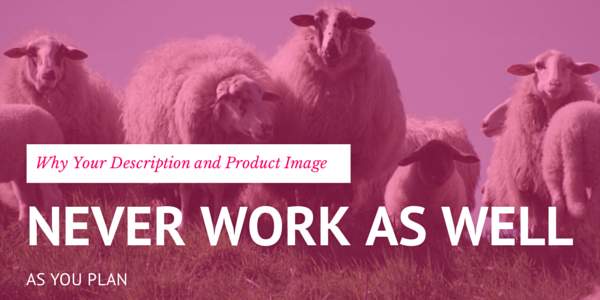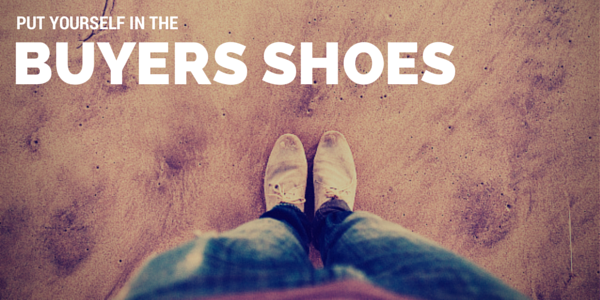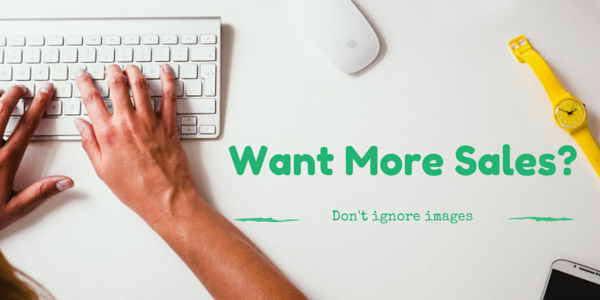Why Your Description and Product Image Never Work as Well as You Plan
A lot of times, product creators and sellers underestimate the importance of description and images.
They tend to focus more on generating quick sales. Leaving the creation of description, product image and search engine optimization as an afterthought.. which often results in a subpar quality of product offering. What they fail to realize is that presentation of any digital product to a large extent will determine your conversion rate (how many sales you’ll make).
If you’re already offering a product for sale online or have plans to join the league, this post will prepare you for what lies ahead.
You and I know that competition is growing at the speed of inflation. If I launch a product today that’s similar to yours, my ultimate goal is to outsmart you and hijack your audience. It may not be fair, but that’s business.
You’ll agree with me that the product title is the most powerful factor that determines the success or failure of any given product. But the description is what connects the title to the value you’ve for your target audience.
Understand your target audience
The goal of describing your product is to give it that feel of usefulness. When buyers visit your store or website, they want to feel at home with everything you do. It’s left for them to buy or leave, your role is to give them a reason to buy.
That’s why your description must be based on the benefits of your product. In your description, don’t just tell buyers that your product will eliminate all their worries and help them stay at the top. Truly, there is nothing wrong with that, but you must be realistic when describing your product.
Actually, let me go ahead and give you the exact steps you should follow when creating a product description. Click the big button below to download the checklist. GIMME!
**
### **Here’s a typical example:**
Mr. Brown sells an e-book that helps aspiring entrepreneurs choose a niche and build a sustainable business. How do you think Mr. Brown would describe his book in order to get more people to buy it? In other words, he wants to influence people’s decision in a legitimate way.
Firstly, he has to know that prospective buyers have a handful of objections i.e. reasons why they won’t buy. When describing your product, put yourself in their shoes and address every objection.
Let’s describe the book, starting with the title:
“Small Business Niche Mastery”
“When it comes to starting your own small business, there are a lot of options available online. But the most vital aspect is choosing a profitable niche. How do you do that? The Small Business Niche Mastery will guide you step by step to pinpoint those hidden niches and help you make the right choice.”
Did you see how I addressed their objections? Your product is not the only one out there, both you and your visitors know this. So there’s no point pretending and you can just skip ahead to the part where you set yourself apart from the competition. I was clear in the example description that a lot of options are available but mine is a step by step guide.
That’s the edge. The impression you’ll create with such or similar description is that you’re an expert who can teach and mentor others. You’re not a geek trying to exploit others.
Make sure you describe who this product is for and who it is not for. People subconsciously want to be a part of certain groups and hate to be associated with others. So if buying your product will help them position themselves in a certain way, then this may make a purchase from them a bit more likely. Additionally, this will help set expectations and eliminate support problems and chargebacks at a later stage too.
The above description is only a guide. No matter your niche or the kind of digital product you’re selling, you can increase sales when you creatively highlight the benefits of your product and use a mild call to action.
The impact of product images on sales
Researchers from eBay have found that image features have correlation with click-through-rate (CTR), and thus sellers have an incentive to submit better images for products that they sell. They observed that a good product image typically has a light colored background, takes a lot of space relative to the background, is bright and has enough contrast.
Keep this in mind when creating your own product image.
Shareaholic reached a similar conclusion, when they discovered that more people will respond to your offer if you use images to convey your message.
Bottom line: want more sales? Don’t ignore images.
Buyers will judge a book first and foremost by its cover. So don’t let anyone deceive you – pay adequate attention to designing a catchy, colorful e-cover if you’re selling an e-book. If you’re selling software, your kit should reflect what you’ve got on the inside. Don’t rush it.
Skyrocket your sales with product description and images
I know it’s hard to write a unique description that will distinguish your creation from thousands of similar products.
But here’s the deal.
If you want people who are not familiar with you and your previous work to buy from you, you really do not a nice description. How do you come up with one? Apart from mentioning all the unique features it has as well making sure that it is 100% clear to the buyer what is inside – tell a story. People will love to hear the story of what motivated you to create this ebook or font, you’re making it easy for them to connect with you.
Just don’t make it too long. Your product description is not a blog post, so keep it really short, maybe as short as one or two sentences.
Your product description doesn’t have to be entirely unique on different platforms. It’s even encouraged to have some common theme to better tie up the visitor experience on different platforms. Make sure you don’t use exactly the same description word for word though. Google doesn’t like that and neither do your visitors.
In case you’ve forgotten, organic visitors are the most targeted buyers you can ever get. Social media traffic needs a lot of persuasion before they can buy as they rarely have commercial or transactional intent. But when buyers discover your website or store through Google or any other search engine, their level of trust is usually high and often they are already ready to give their money to you.
Having unique product descriptions is vital, but product images are the bloodline of your sales. If you’re not a designer and Photoshop is not your cup of tea, try using Canva to easily create professional images for your product. Whether you’re a seller, product creator or an internet publisher, learn to dominate your niche with professional product images and be creative in your description.
It’s time to act
From this post, you’ve gotten insights on writing product descriptions and creating professional images and how this can impact your sales. But you’ll not experience any difference in your business if you leave this page and do nothing.
Start from where you are right now. Take a look at your product and see whether your descriptions would inspire people to buy or subscribe to your email list.
Look at your product image one more time – do you like the visuals you’re using? If you were a potential buyer, do you feel an emotional sensation on the inside of you to whip out your credit card and buy?
If you’ve questions or objections buried within you, it means you’ve to work on your design.
In all, be determined to build engagement with every product you sell whether online or offline. Because if potential buyers are happy and engaged, they’ll buy and tell others about you.







![Stan Store vs Shopify: A Definitive Comparison [October 2024]](https://wp.sellfy.com/blog/wp-content/uploads/2024/10/Stan-Store-vs-Shopify-1000x563.png)

